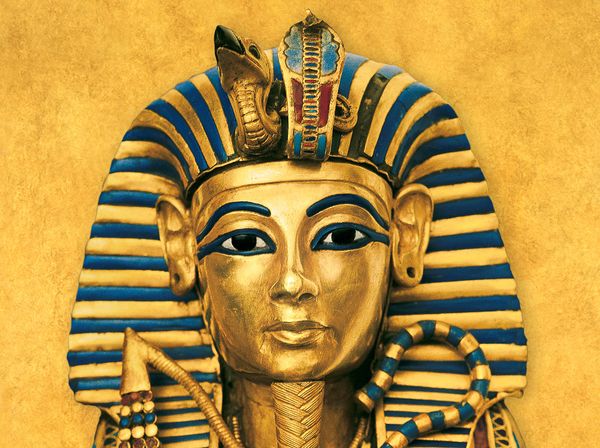
THE WORD "HAMAN" IN THE QUR'AN
The information given in the Qur'an about ancient Egypt reveals many
historical facts that had remained undisclosed until recent times. These facts
also indicate to us that every word in the Qur'an has been revealed by sure
wisdom.
Haman is a character whose name is mentioned in the Qur'an, along with
the Pharaoh. He is recorded in six different places of the Qur'an as one of the
closest men to the Pharaoh.
Surprisingly the name of Haman is never mentioned in those sections of
the Torah pertaining to the life of Moses. However, the mention of Haman can
be found in the last chapters of the Old Testament as the helper of a Babylonian
king who inflicted many cruelties on the Israelites approximately 1,100 years
after Moses.
Some non-Muslims, who claim that the Prophet Muhammad (peace be
upon him) wrote the Qur'an by copying from the Torah and the Bible, also
assert that during the process, he transferred some of the subjects related in
these books into the Qur'an incorrectly.
The absurdity of these claims was demonstrated only after the Egyptian
hieroglyphic alphabet had been deciphered, approximately 200 years ago, and
the name "Haman" discovered in the ancient scripts.
Before these discoveries, the writings and inscriptions of ancient Egypt
could not be understood. The language of ancient Egypt was hieroglyphic,
which survived through the ages. However, with the spread of Christianity
and other cultural influences in the 2nd and 3rd centuries AD, Egypt forsook
its ancient beliefs as well as hieroglyphic writing. The last known example of
the use of hieroglyphic writing was an inscription dated 394 AD. Then that
language was forgotten, leaving nobody who could read and understand it.
And that was the situation until some 200 years ago
The mystery of ancient Egyptian hieroglyphics was solved in 1799 by the
discovery of a tablet called the "Rosetta Stone" dating back to 196 B.C. The
importance of this inscription was that it was written in three different forms
of writing: Hieroglyphics, demotic (a simplified form of ancient Egyptian
hieratic writing) and Greek. With the help of the Greek script, the ancient Egyptian writings were decoded. The translation of the inscription was
completed by a Frenchman named Jean-Franoise Champollion.
Hence a
forgotten language and the events related in it were brought to light. In this
way, a great deal of knowledge about the civilization, religion and social life of
ancient Egypt became available.
Through the decoding of hieroglyph, an important piece of knowledge
was revealed: the name "Haman" was indeed mentioned in Egyptian
inscriptions. This name was referred to in a monument in the Hof Museum in
Vienna.
In the dictionary of People in the New Kingdom, that was prepared based on
the entire collection of inscriptions, Haman is said to be "the head of stone
quarry workers".
The result revealed a very important truth. Unlike the false assertion of
the opponents of the Qur'an, Haman was a person who lived in Egypt at the
time of Moses, who had been close to the Pharaoh, and had been involved in
construction work, just as imparted in the Qur'an.
Furthermore, the verse in the Qur'an describing the event where the
Pharaoh asked Haman to build a tower is in perfect agreement with this
archaeological finding:
{{ÓPharaoh said, 'Council, I do not know of any other god for you apart
from Me. Haman, kindle a fire for me over the clay and build me a lofty
tower so that perhaps I may be able to climb up to Moses' god! I
consider him a blatant liar.'}}
(The Qur'an, 28:38)
In conclusion, the existence of the name Haman in the ancient Egyptian inscriptions not only rendered the fabricated claims of the opponents of the Qur'an worthless, but also confirmed one more time the fact that the Qur'an comes from God. In a miraculous way, the Qur'an conveys to us historical information that could not have been possessed or understood at the time of the Prophet.